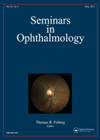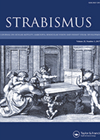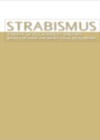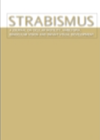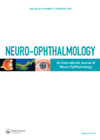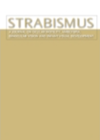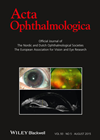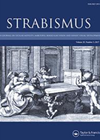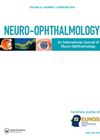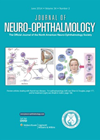
Journal Reviews
Retreatment of myopic LASIK with femtosecond and custom ablation
The purpose of this study was to identify the risk factors for retreatment post laser in situ keratomileusis (LASIK). A retrospective chart review was carried out for a four-year period and all patients who had undergone LASIK at the Boston...
Pseudostrabismus leading to strabismus
The authors aimed to evaluate the incidence of strabismus in children initially diagnosed with pseudostrabismus and identify risk factors for development of strabismus. This was a retrospective review of 65 patients with a diagnosis of pseudostrabismus; two exo and 63...
Perception of depth in 3-D media
The aim of this study was to evaluate the relationship between clinical measures of stereoacuity and the perception of depth in 3-D entertainment media. Fifty-seven subjects aged 16-62 years with stereopsis and no strabismus were assessed. Monocular blur was used...
Stimulus type vs. convergence measures
The aim of this study was to investigate if near point of convergence (NPC) would improve when a fixation target with centrally placed 3-D features (to increase binocular disparity stimulus) was used in comparison to a target using only centrally...
Driving with the use of spectacle mounted telescopes (bioptics)
The authors discuss the current perspectives of spectacle mounted telescopes (bioptics) whilst driving among patients with visual impairment. The history, design and driving laws surrounding the use of bioptics is discussed in detail. In 1977, William Feinbloom developed a bioptic...
Three methods of suppression measurement
Test-retest reliability and interchangeability are evaluated for three filter bars available to measure density of suppression: Sbisa bar, Bagolini filter (BF) bar and neutral density filter (NDF) bar. The study involved 10 strabismic adults. Testing conditions were altered and effects...
Iranian prevalence of convergence / accommodative disorders
The aim of this study was to investigate the frequency of accommodative and convergence disorders in an optometric clinical population and ascertain tests with the highest sensitivity and specificity in detecting these anomalies. The authors gathered information on symptoms, near...
The rarebit vision test for macular conditions
Rarebit testing is used to measure low degrees of neuro-visual damage and is available for free on the internet. It consists of a fixed bright light dot presented on a black background. During testing it is presented briefly at different...
Dyslexic reading improved by vergence training
The aim of this study was to evaluate if reading performance could be improved by a period of compensatory vergence training in dyslexic children with otherwise normal binocular vision. The study included 13 children with dyslexia – mean age of...
Effect of oxygen levels on binocular summation of dark vision
Previous studies have reported conflicting results on the existence of binocular enhancement of dark vision. This study compares monocular and binocular absolute thresholds of dark adaptation in two different populations (healthy individuals and those with chronic respiratory insufficiency). The study...
Reliability of kinetic perimetry in children and young adults
This study reports on normative visual field area, feasibility and repeatability of testing for a large sample size of healthy children and young adults, using Octopus semi-automated kinetic perimetry. Sample included 221 healthy volunteers aged 5-22 years. The study was...
Reported cases of hemifield slide phenomenon
This article reports three cases of hemifield slide, a phenomenon whereby there is an inability to stabilise and fuse visual hemifields. It occurs with heteronymous visual field loss and is thought to result from the loss of corresponding retinal points....

